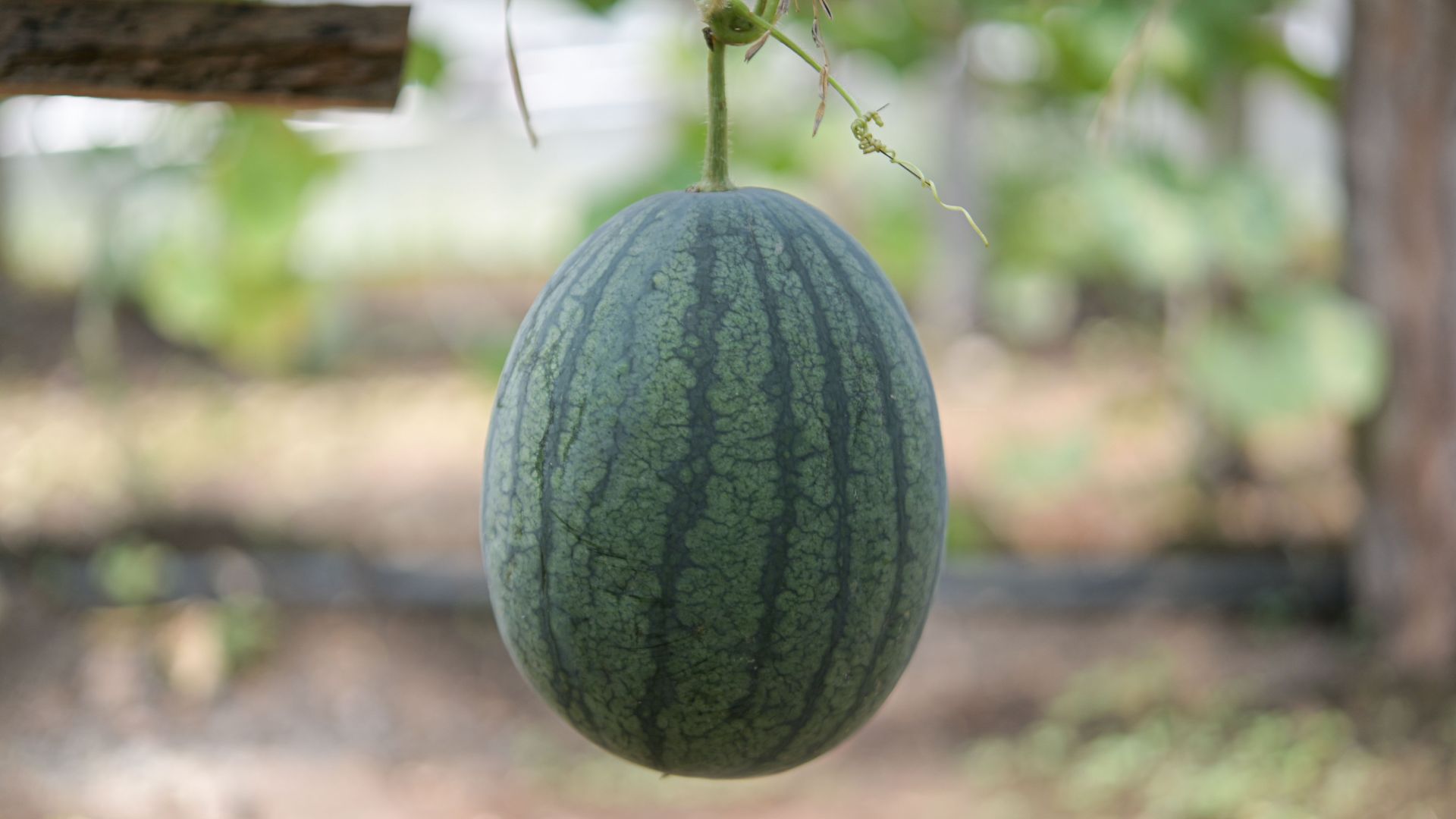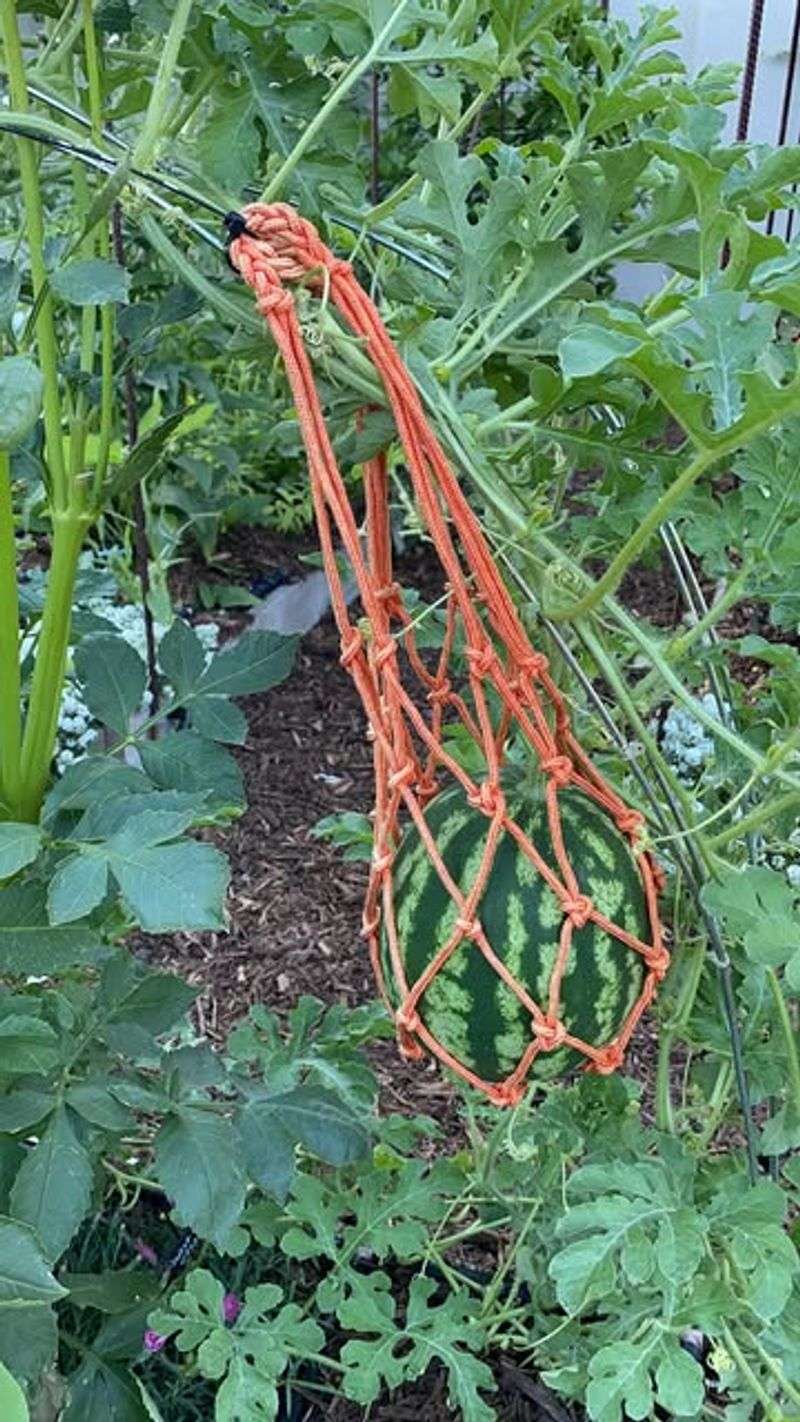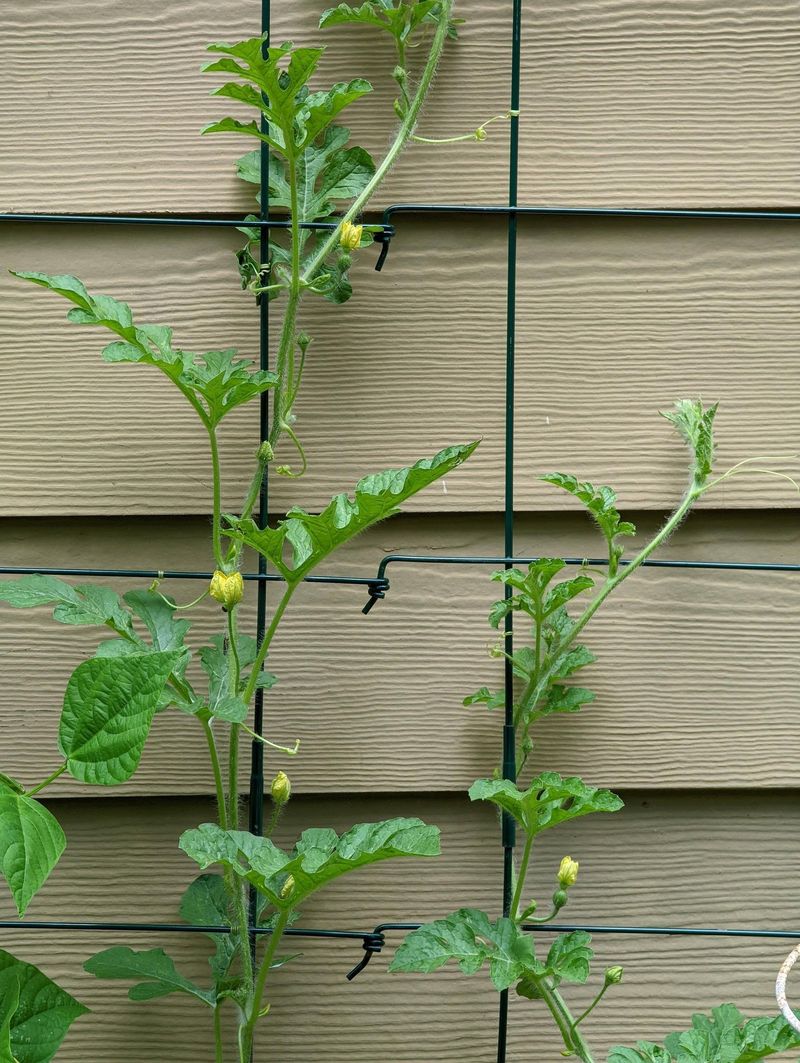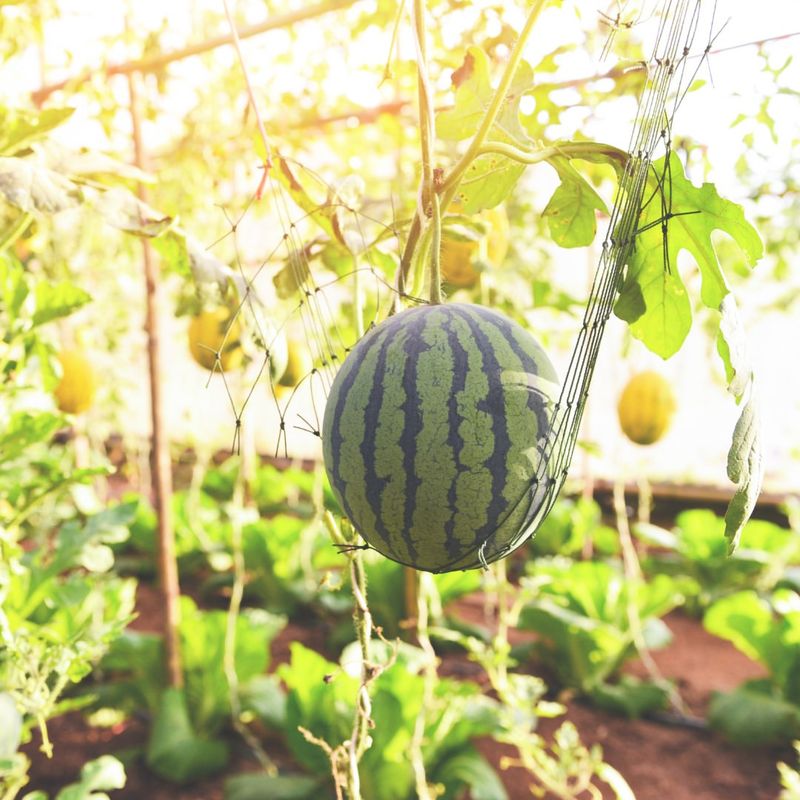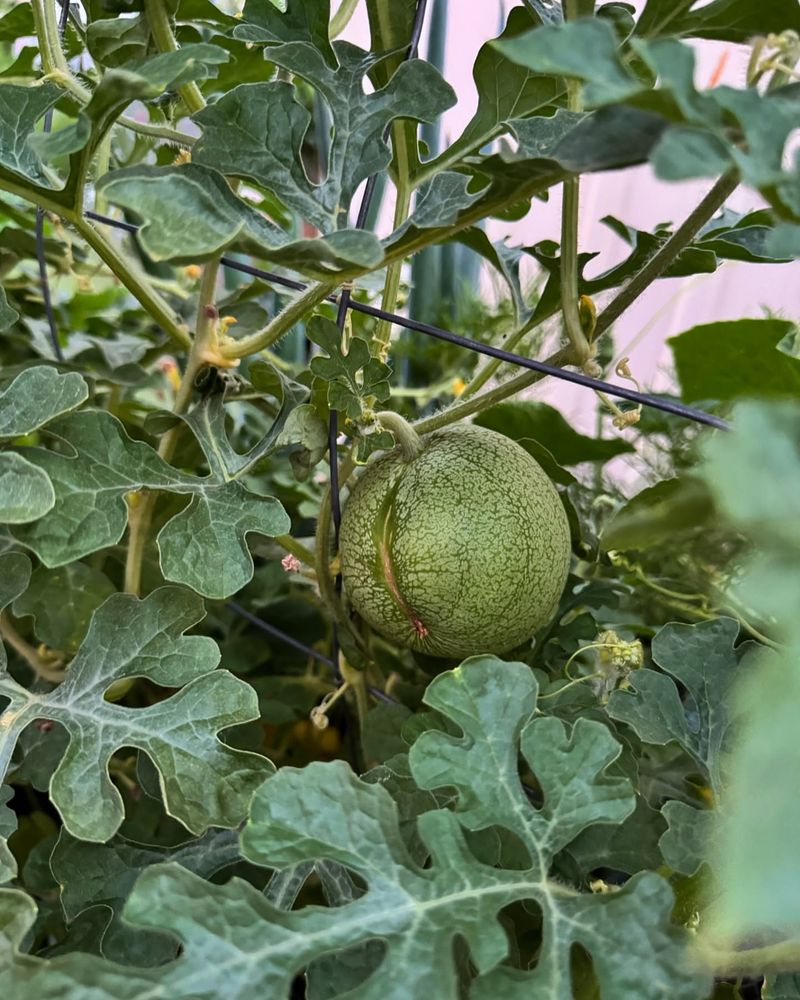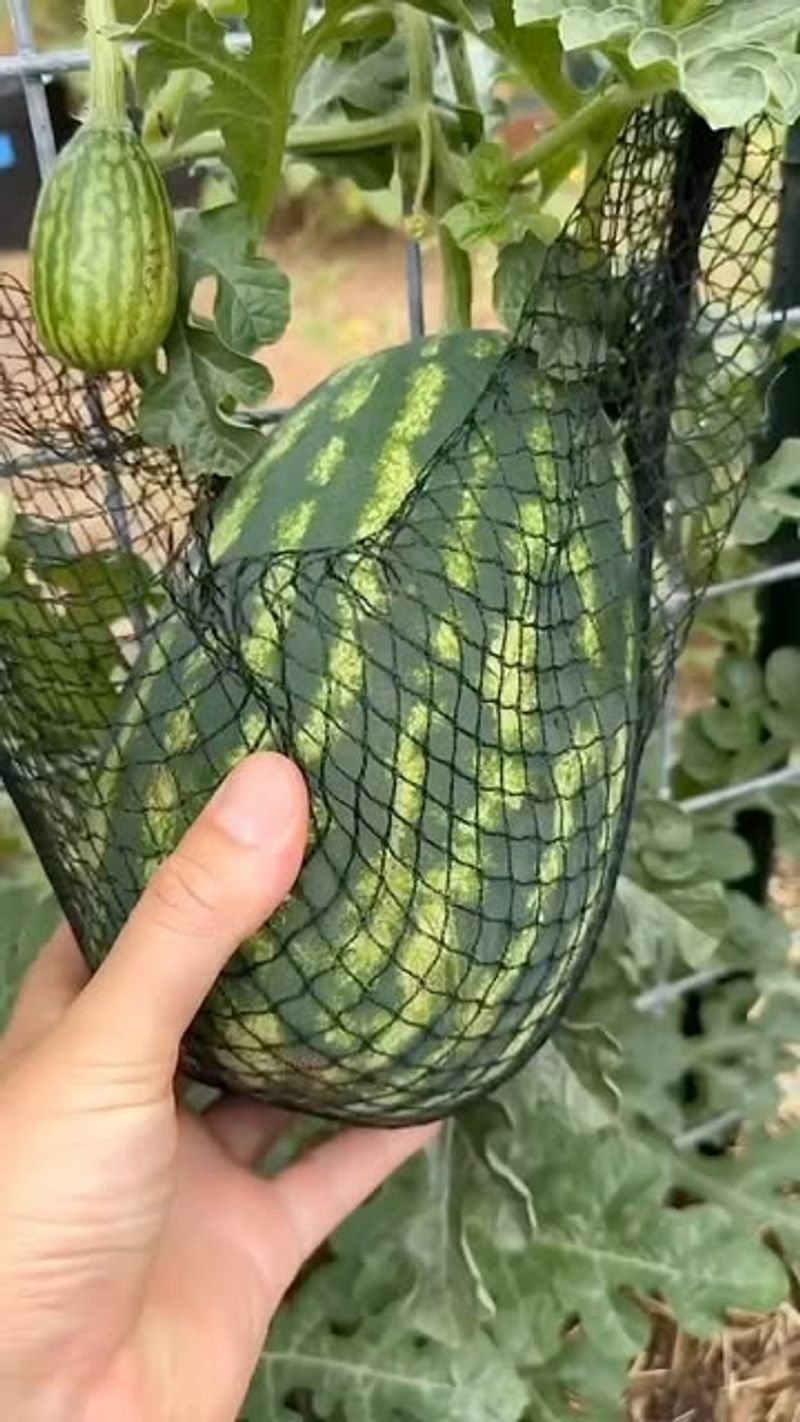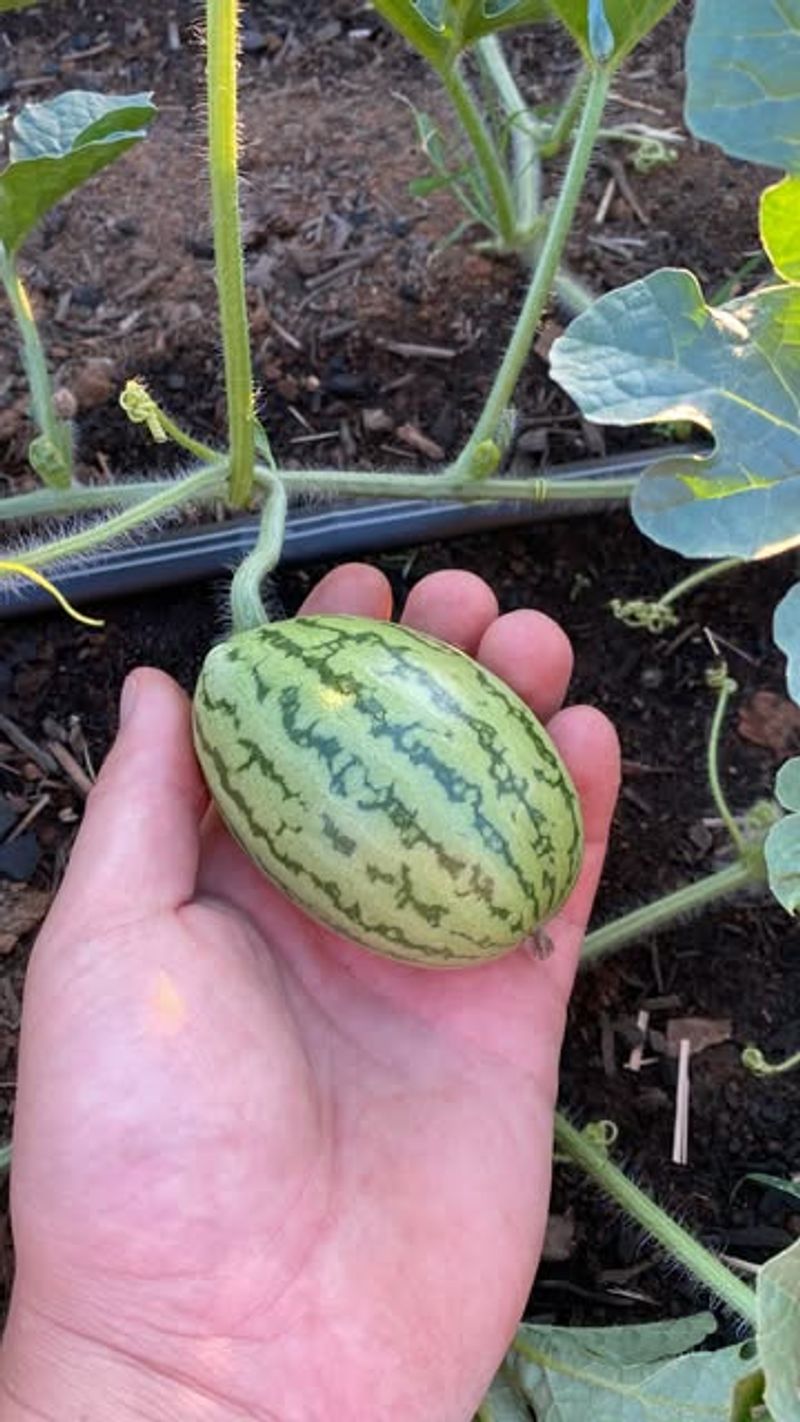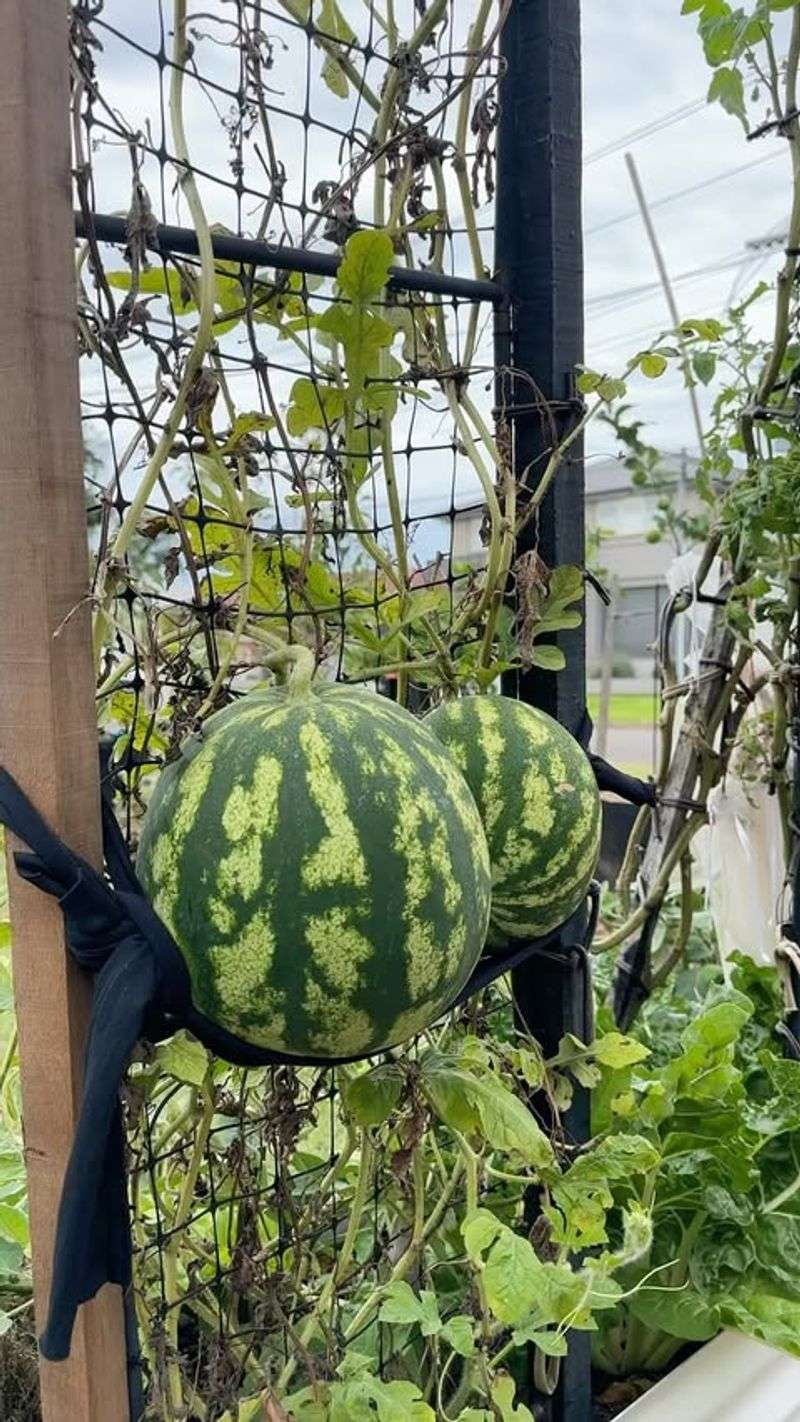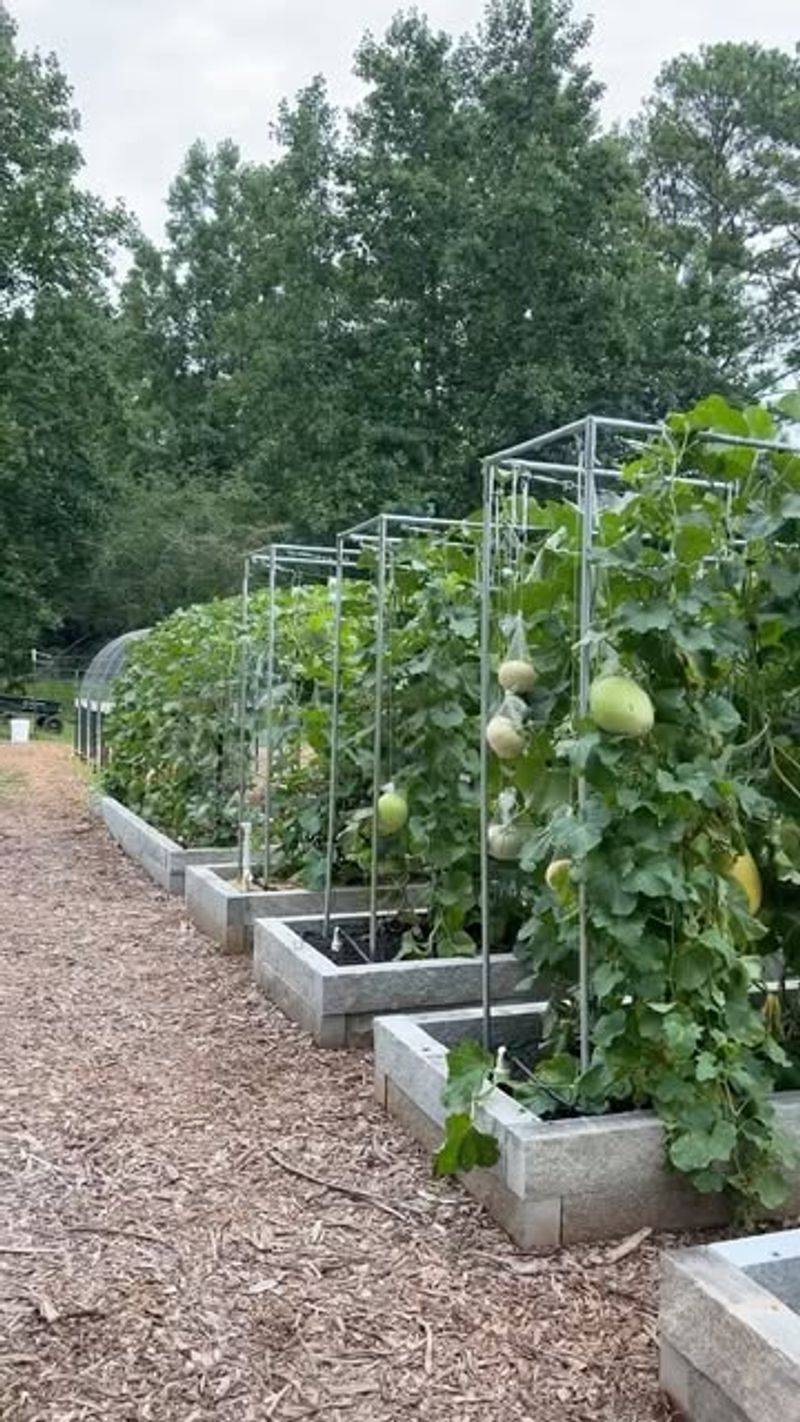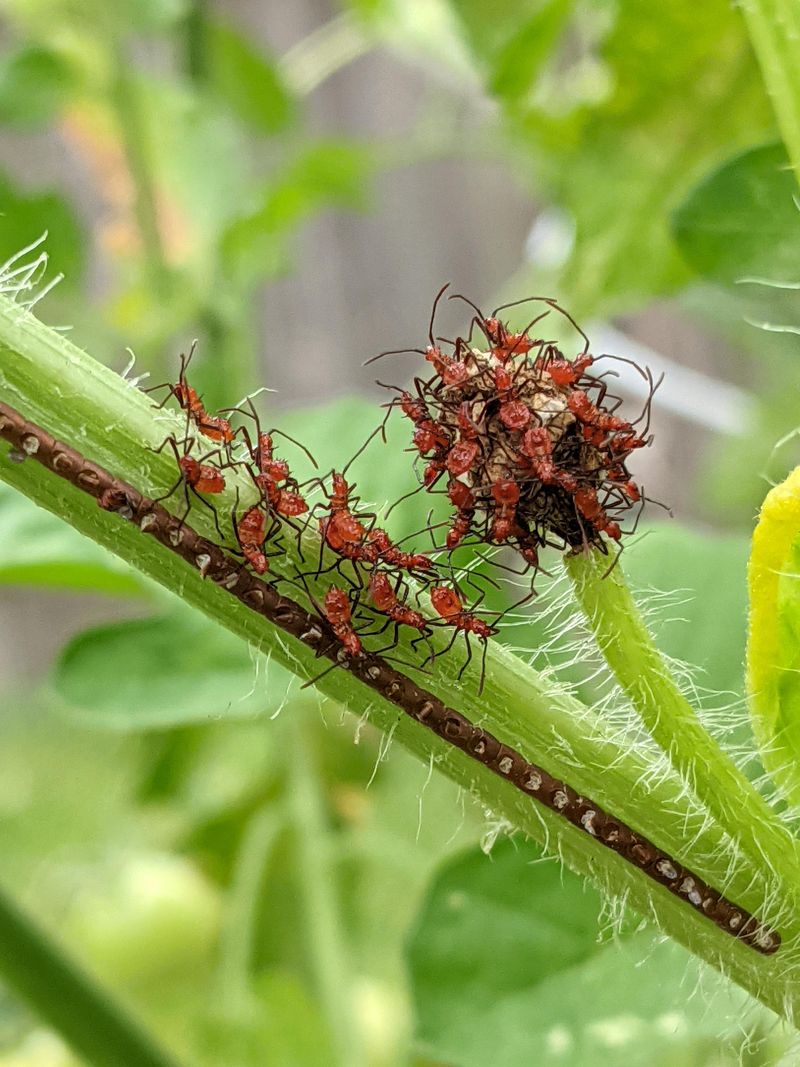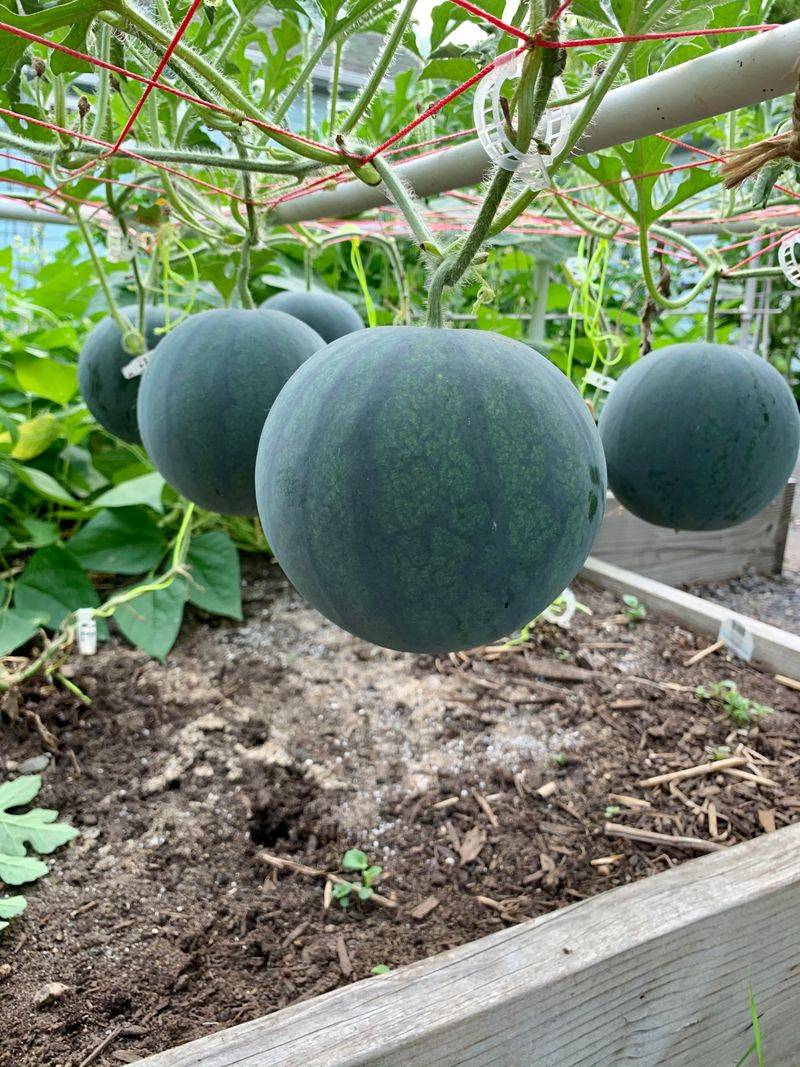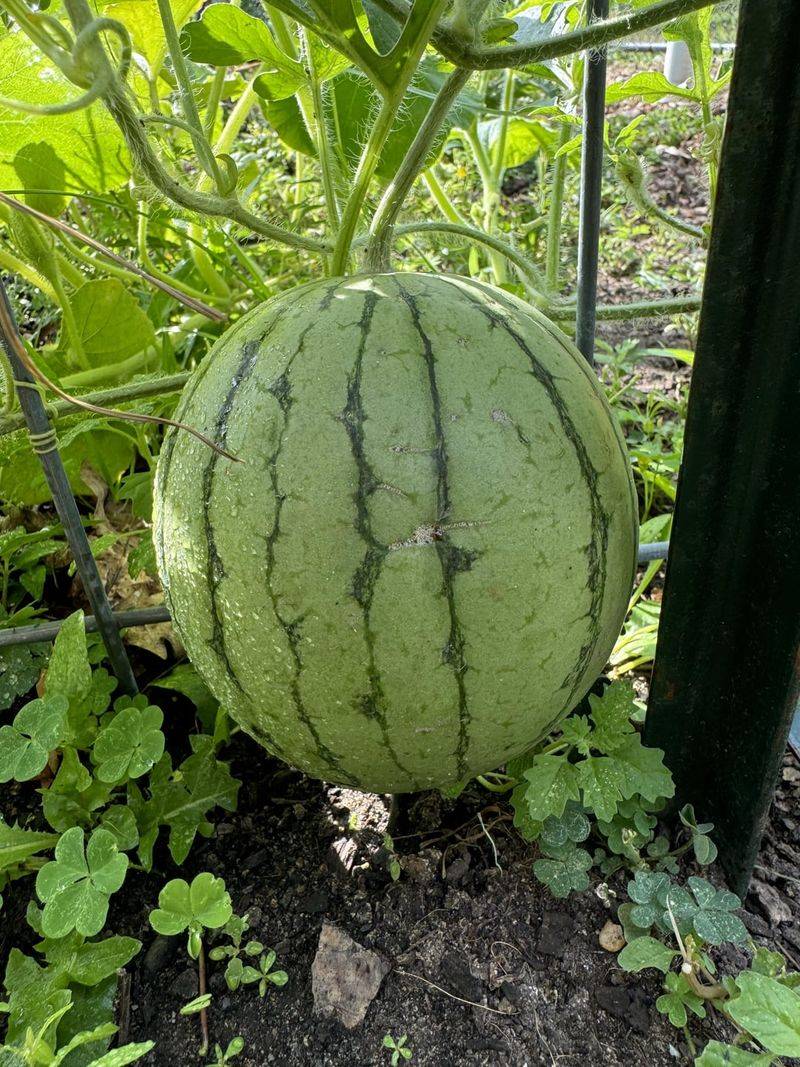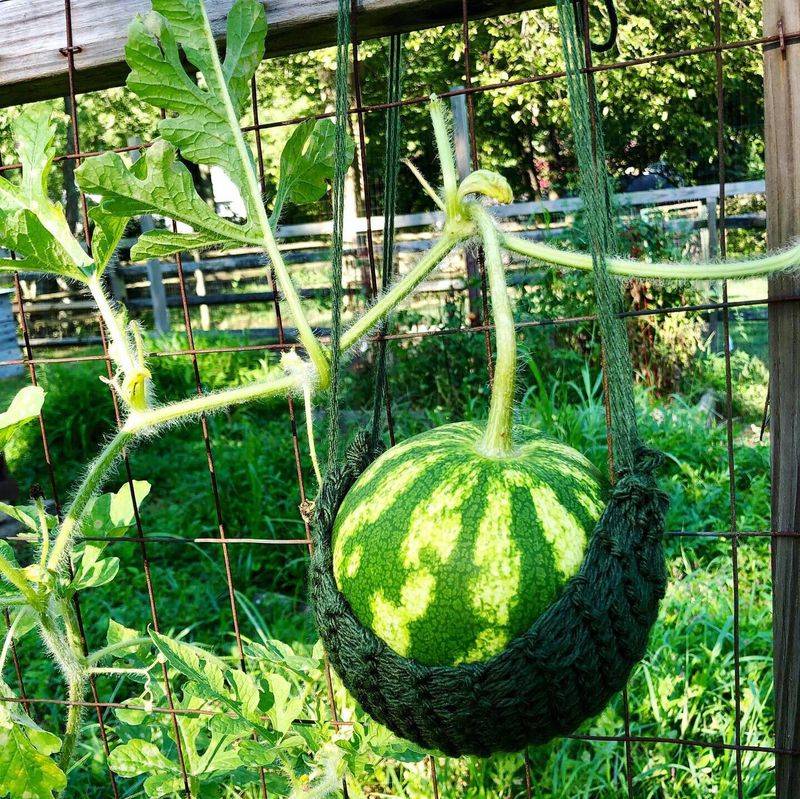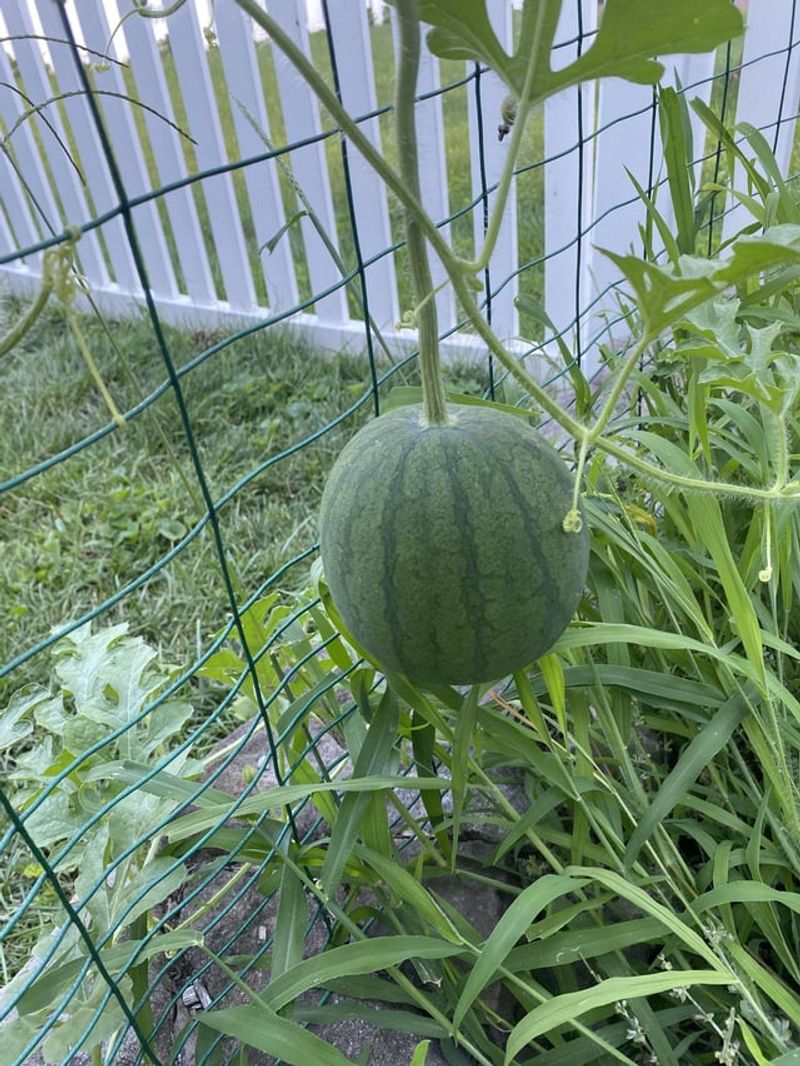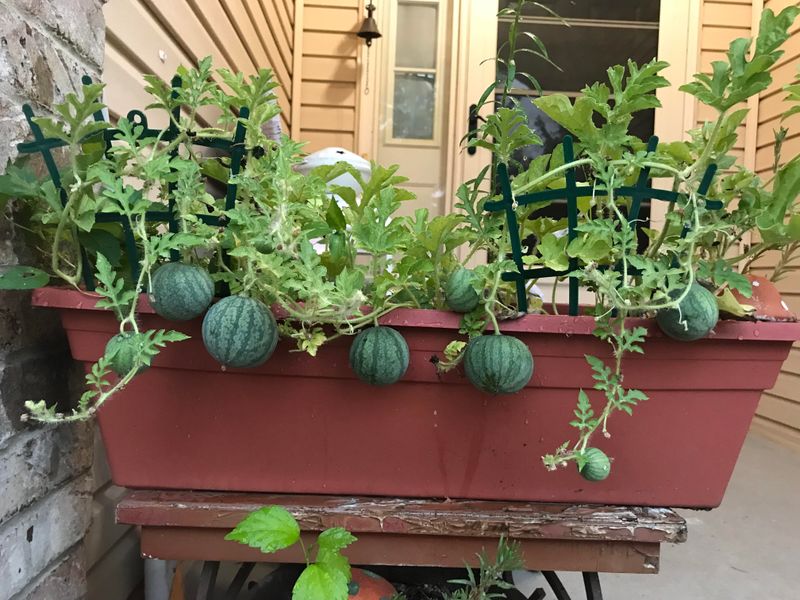Think you need a huge garden to grow watermelons? Think again. With the right vertical setup, you can grow big, juicy melons in the tiniest of spaces. These 11 smart tricks make it possible—no sprawl required.
And to keep things sweet (not soggy), we’ve added 5 common mistakes that could ruin your crop if you’re not careful.
1. Choose Compact Varieties
Small-fruited watermelon varieties are your best friends for vertical growing. Look for varieties like ‘Sugar Baby,’ ‘Mini Love,’ or ‘Little Darling’ that produce fruits weighing 3-8 pounds.
These compact melons put less strain on your support structure and have a better chance of staying attached to the vine as they mature. Plus, they typically mature faster than their larger cousins, giving you a quicker harvest in limited spaces.
2. Build a Sturdy Trellis
Your support system needs serious muscle to handle watermelon weight. Construct a trellis using metal cattle panels, heavy-duty garden arches, or reinforced wooden frames anchored deeply in the ground.
The ideal trellis stands 6-8 feet tall and features gaps wide enough for vines to weave through but small enough to provide multiple support points. Consider angling your trellis slightly toward the sun for maximum exposure while making harvesting easier.
3. Create Perfect Planting Pockets
Watermelons thrive in rich, well-draining soil mounds at the base of your trellis. Dig holes 12 inches wide and deep, then mix in plenty of compost and aged manure to create nutrient-rich planting pockets.
Space each pocket about 2-3 feet apart to prevent overcrowding. This concentrated growing area maximizes limited garden space while providing roots with exactly what they need. The raised mound also improves drainage and warms the soil faster in spring.
4. Train Vines Regularly
Watermelon vines don’t naturally climb upward – they need your guidance. Gently weave new growth through your trellis every 2-3 days, securing with soft plant ties or strips of old t-shirts.
Start training when vines reach 6-8 inches long. Never force a vine that resists bending as this can cause breakage. Remember that main vines are thicker and stronger than secondary vines, so prioritize training these primary pathways first.
5. Support Developing Fruits
Once fruits reach softball size, they need extra support to prevent stem breakage. Create hammocks using old t-shirts, pantyhose, or specialized fruit netting tied securely to your trellis.
The support material should cradle the melon while allowing air circulation to prevent rot. Adjust supports as fruits grow larger, ensuring the stem isn’t strained. These fruit hammocks work with gravity rather than fighting it, allowing melons to grow normally despite their vertical position.
6. Water Deeply But Carefully
Vertical watermelons need consistent moisture without waterlogged soil. Install a drip irrigation system at the base of plants to deliver water directly to roots without wetting foliage or fruits.
Aim for 1-2 inches of water weekly, increasing during fruit development and hot weather. Morning watering gives leaves time to dry before evening, reducing disease risk. A 2-3 inch layer of mulch around plants helps retain moisture and suppress weeds in your limited garden space.
7. Feed With Balanced Nutrients
Vertical watermelons are heavy feeders needing specific nutrients at different growth stages. Start with a balanced organic fertilizer (like 10-10-10) at planting time.
Once flowering begins, switch to a formula higher in phosphorus and potassium (like 5-10-10) to support fruit development. Apply liquid seaweed or compost tea every two weeks throughout the growing season. In small gardens, targeted feeding ensures maximum production from minimal space.
8. Prune For Productivity
Strategic pruning concentrates plant energy into fewer, better melons. Remove side shoots below the first female flowers (identified by tiny fruit behind the blossom) and limit each plant to 2-3 main vines.
Once you have 2-3 developing fruits per plant, pinch off new female flowers to prevent overproduction. This focused growing approach is perfect for small gardens where space efficiency matters more than quantity. Your remaining fruits will grow larger and sweeter with this targeted energy distribution.
9. Hand-Pollinate For Better Fruit Set
Vertical growing can sometimes reduce pollinator access to flowers. Boost fruit production by hand-pollinating during early morning hours when pollen is most viable.
Simply transfer pollen from male flowers (thin stems with no tiny fruit behind them) to female flowers using a small paintbrush or by removing a male flower and touching its center to the female flower centers. This simple morning task dramatically increases your success rate in limited garden spaces.
10. Manage Pests Organically
Vertical growing actually reduces many pest problems, but remaining threats need attention. Cucumber beetles and aphids remain common challenges. Introduce beneficial insects like ladybugs and lacewings as your first defense.
Spray plants weekly with neem oil solution or insecticidal soap for persistent problems. Row covers over young plants provide early protection but must be removed during flowering for pollination. In small gardens, daily pest checks are easier with vertical growing since plant parts are more visible.
11. Maximize Sunlight Exposure
Watermelons demand full sun to produce sweet fruits. Position your vertical structure on the north side of your garden facing south to prevent shading other plants while maximizing melon sun exposure.
In small spaces with limited sun, consider reflective mulch beneath plants to bounce light back onto lower leaves. Prune any excessive foliage that shades developing fruits. With vertical growing, you can strategically arrange plants to create sun corridors even in tight spaces.
12. MISTAKE: Choosing Oversized Varieties
One of the biggest vertical watermelon disasters happens when gardeners select mammoth varieties. Those 20-30 pound giants like ‘Crimson Sweet’ will likely tear down your trellis or break their stems.
Large watermelons create excessive weight stress even with support slings. They also take longer to mature, extending your growing season beyond what small gardens can accommodate. Stick with varieties specifically bred for container or small-space growing to avoid disappointment and structural failures.
13. MISTAKE: Inadequate Support Structures
Flimsy trellises spell disaster for vertical watermelons. Those decorative fan-shaped garden trellises or lightweight netting cannot handle the increasing weight of developing fruits.
Underbuilt supports eventually collapse mid-season, destroying your plants and wasting months of effort. Proper vertical watermelon structures need reinforced corners, deep ground anchoring, and materials rated for at least 100 pounds of weight. This initial investment in sturdy materials saves heartbreak later.
14. MISTAKE: Improper Watering Techniques
Overhead watering creates a perfect environment for fungal diseases in vertical watermelon gardens. Wet foliage combined with reduced air circulation leads to powdery mildew and other leaf problems.
Inconsistent watering causes fruits to split or develop blossom end rot. Vertical systems also dry out faster than ground plantings, making automated irrigation almost essential. The goal is keeping roots consistently moist while leaves and fruits stay dry – a balance achieved through proper watering techniques.
15. MISTAKE: Overcrowding Plants
The excitement of vertical growing sometimes leads gardeners to plant too densely. Cramming multiple watermelon plants too closely creates competition for nutrients and light while reducing air circulation.
Poor air movement between crowded plants increases disease problems dramatically. Even with vertical growing, each watermelon plant needs at least 2-3 feet of horizontal space. Proper spacing ensures each plant receives adequate resources and prevents the rapid spread of pests and diseases through your small garden.
16. MISTAKE: Neglecting Pollination
Many vertical watermelon growers wonder why their beautiful vines produce flowers but no fruits. The answer often lies in poor pollination, especially in urban gardens with fewer natural pollinators.
Vertical growing sometimes positions flowers differently than in traditional gardens, confusing bees and other insects. Without transferring pollen from male to female flowers, no fruit development occurs. Hand pollination takes just minutes each morning but makes the difference between harvest success and failure.

